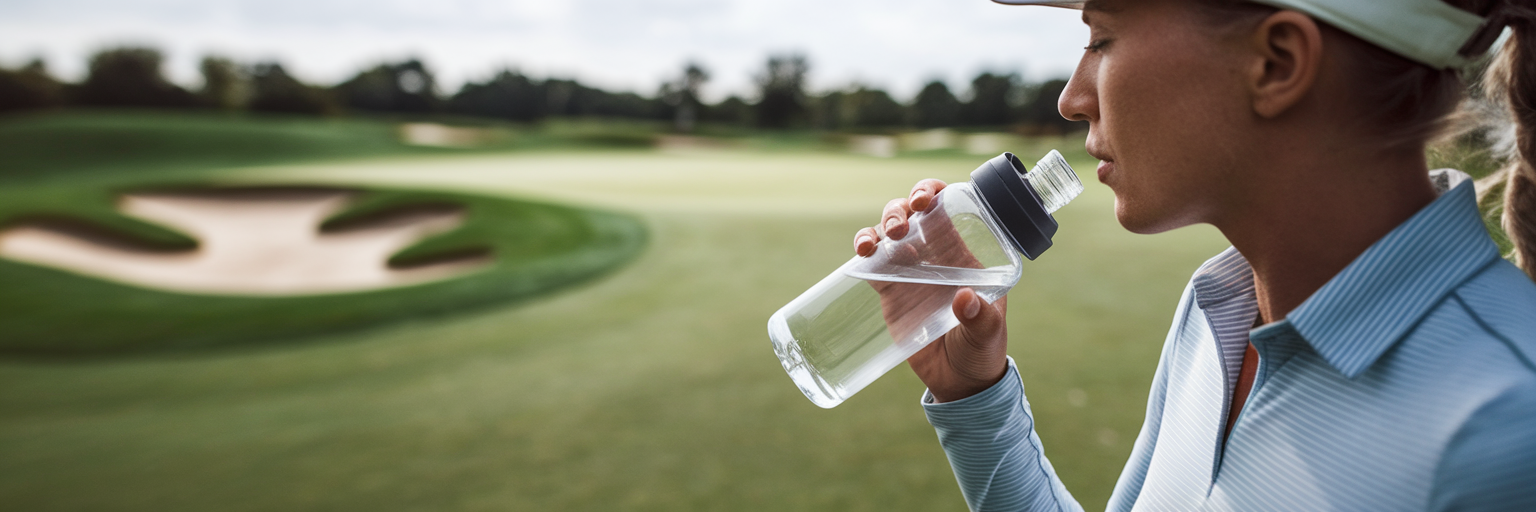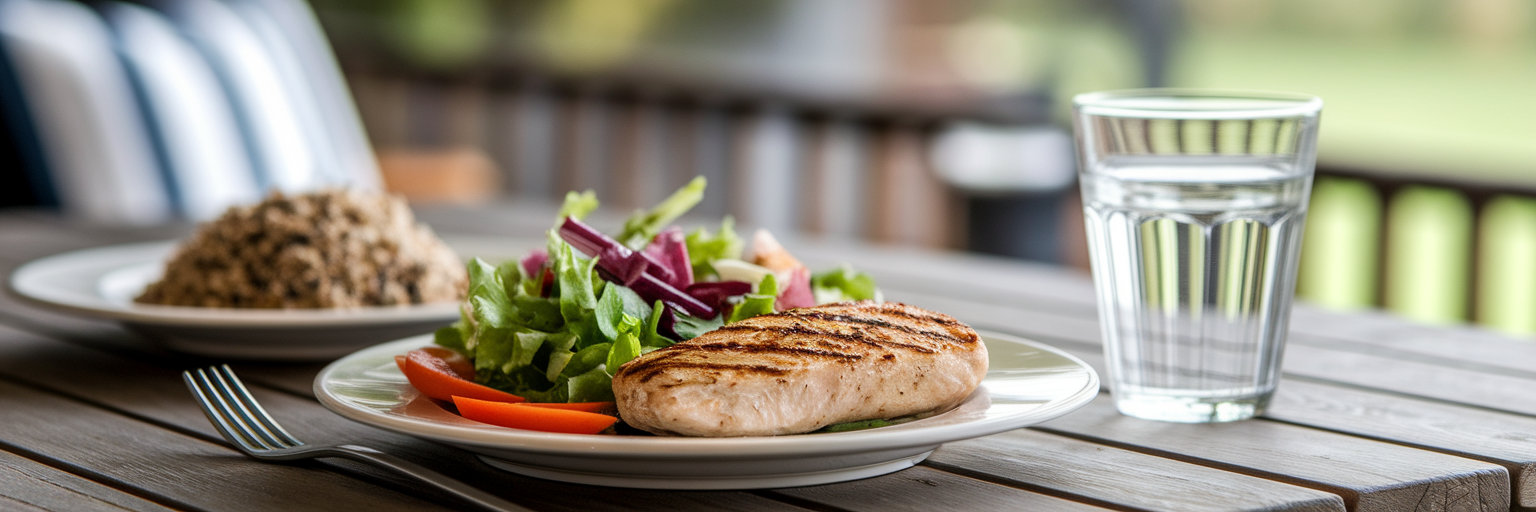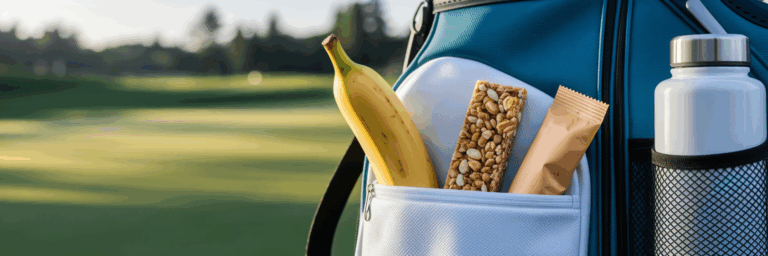What to Eat to Play Better Golf
A typical round of golf can last four hours or more, making it a sport of endurance just as much as skill. We often focus on perfecting our swing or reading the green, but forget what powers those actions. Think of it this way: you would not expect a car to run smoothly on the wrong fuel. Your body is no different. Proper nutrition is essential for maintaining physical energy and mental clarity from the first tee to the final putt.
The right food choices prevent fatigue, sharpen your concentration for crucial shots, and support the complex muscle movements of your swing. Making smart nutritional decisions is a fundamental part of learning how to play golf effectively. This guide will provide simple, actionable strategies for what to eat before, during, and after a round to help you feel strong, focused, and confident on the course.
Fueling Up Before You Tee Off
What you eat before your round sets the stage for your entire performance. A well-planned meal provides the steady energy needed to power your swing and maintain focus, while the wrong choice can leave you feeling sluggish or lead to an energy crash on the back nine. The key is to eat not just the right foods, but at the right time.
Timing Your Pre-Round Meal
Timing is everything. Aim to eat a balanced meal 2 to 3 hours before your tee time. This window gives your body enough time to digest the food and convert it into usable energy. Eating too close to your round can divert blood to your stomach for digestion instead of to your muscles, making you feel heavy and slow. Eating too early might leave you feeling hungry before you even finish the front nine.
What to Include in Your Meal
When deciding what to eat for golf, focus on a combination of three core components. You need complex carbohydrates for slow-release energy, lean protein for muscle support, and a small amount of healthy fats for lasting fuel. This balanced approach ensures you have sustained power without the spikes and crashes that come from sugary or processed foods. Here are a few simple and effective meal ideas:
- Oatmeal with berries and a handful of almonds
- A whole-wheat sandwich with turkey and lettuce
- Scrambled eggs with whole-grain toast and a side of avocado
Avoid heavy, greasy foods like fried items or rich pastries. These take longer to digest and can leave you feeling lethargic, which is the last thing you want when standing over an important shot.
The Importance of Hydration for Focus and Stamina
While solid food provides the building blocks for energy, hydration is what keeps your mind and body operating smoothly. Even mild dehydration can significantly impair your performance. It can cause a loss of concentration, lead to poor decision-making, and reduce your coordination, turning an easy putt into a frustrating miss. You might feel tired or get a headache, signs that your body is struggling.
One of the most effective hydration tips for golfers is to be proactive, not reactive. Do not wait until you feel thirsty. A great rule of thumb is to drink approximately 500 to 600 millilitres of water per hour during your round. Your hydration should start well before you even arrive at the course. Drink a glass of water in the morning and another before you head out.
For most rounds, water is your best choice because it hydrates without adding unnecessary sugar. However, on very hot and humid days or during an exceptionally long round where you are sweating a lot, an electrolyte drink can be beneficial. These drinks help replace essential minerals like sodium and potassium lost through sweat, which can prevent muscle cramps and fight off fatigue. Just be sure to choose a low-sugar option to avoid an energy crash.
On-Course Snacks to Maintain Your Energy
The energy from your pre-round meal will naturally start to fade over a four-hour game. This is where smart snacking becomes essential for maintaining stable blood sugar and preventing that dreaded mid-round slump. Having the right snacks in your bag provides the necessary energy for a golf round, keeping you sharp from start to finish.
The best snacks for golf are portable, easy to eat between shots, and provide sustained energy rather than a quick sugar rush. As a key part of golf nutrition for beginners, think about snacks you can eat with one hand while walking to your next shot. To keep energy levels stable, the PGA of America suggests packing your golf bag with healthy, portable options. Some excellent choices include:
- Bananas or apples for natural sugars and potassium
- Small bags of mixed nuts and dried fruit for protein and healthy fats
- Low-sugar granola or protein bars for a convenient boost
- Beef or turkey jerky for a savoury, protein-rich option
A simple and effective strategy is to eat a small snack every 4 to 5 holes. This proactive approach keeps your energy levels consistent, so you never have to play on an empty tank. Waiting until you feel hungry is often too late, as your focus and energy have already started to decline.
Recovering After Your Round
What you do after your final putt is just as important as what you did before your first tee shot. Post-round nutrition is crucial for muscle repair, replenishing your energy stores, and reducing soreness. A good recovery meal helps your body bounce back faster, so you are ready for your next game or practice session.
There is a "recovery window" that is ideal for refueling. Try to eat a recovery-focused meal or snack within 30 to 60 minutes of finishing your round. During this time, your muscles are most receptive to absorbing nutrients for repair. The goal is to consume a mix of high-quality protein to rebuild muscle tissue and complex carbohydrates to restock your energy reserves.
Simple and effective recovery options include:
- A protein shake with a banana
- Greek yogurt with fruit and a sprinkle of granola
- A balanced meal like grilled chicken or fish with vegetables and quinoa
Finally, do not forget to continue hydrating. You lose a lot of fluid over 18 holes, so keep drinking water after your round to fully replenish what was lost through sweat and exertion. This simple step aids recovery and helps you feel better the next day.
Your Simple Golf Nutrition Game Plan
Proper nutrition does not have to be complicated. By focusing on a few key principles, you can ensure your body has the fuel it needs to perform at its best. Think of it as another tool in your golf bag that helps you stay strong and focused. Experiment with these tips to find what works best for you.
Remember that paying attention to your nutrition is a key part of learning how to play golf. It builds confidence, improves stamina, and ultimately helps you enjoy the game more. Here is a quick-reference guide to help you plan:
| Phase | Timing | Goal | Examples |
|---|---|---|---|
| Before Your Round | 2-3 hours before tee-off | Sustained Energy | Oatmeal with fruit, whole-wheat sandwich, or eggs with toast. |
| During Your Round | Every 4-5 holes | Maintain Focus & Stamina | Water, banana, mixed nuts, or a low-sugar protein bar. |
| After Your Round | Within 60 minutes of finishing | Muscle Repair & Recovery | Protein shake, Greek yogurt, or grilled chicken with quinoa. |
This table summarizes the key nutritional strategies to help you stay energized and focused throughout your entire golf experience.




